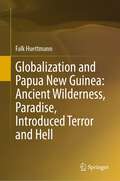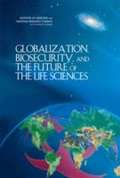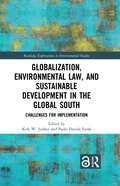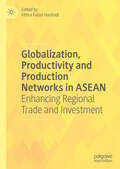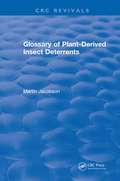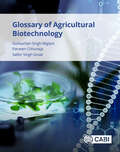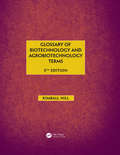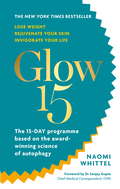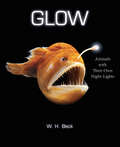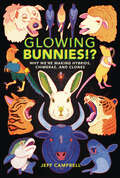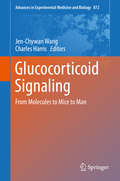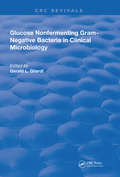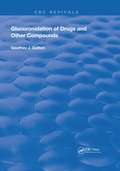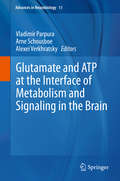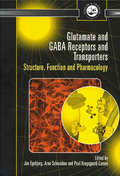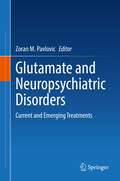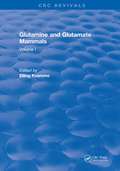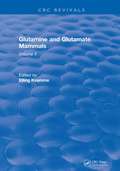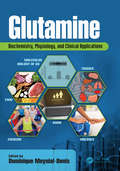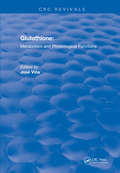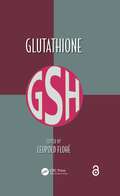- Table View
- List View
Globalization and Conflict: National Security in a 'New' Strategic Era (Contemporary Security Studies)
by Robert G. PatmanThis volume highlights the gap between the new security environment and the notion of state-centred national security favoured by Washington, showing how a Cold War phenomenon known as the national security state, in which defence and foreign policy interests essentially converge, remains largely intact. The conventional wisdom since the suicide attacks of 9/11 is that the world has been transformed and, according to President Bush, "September 11 changed the strategic thinking" of the US. This book challenges these assumptions. Indeed, the Bush administration’s National Security strategy of 2002 has reinvigorated and even extended the idea of national security. Paradoxically, the renewed emphasis on a distinctly state-centred approach to security, including the War on Terror, has unfolded during an era of deepening globalization. Drawing on the international expertise of fourteen specialists, the book examines four inter-related themes: the impact of globalization on the concept of security the strategic outlook of the world’s only superpower, the US the new conflicts that have come to characterize the post-Cold War era efforts to regulate the emerging patterns of conflict in the world. Globalization and Conflict will be essential reading for students of strategic studies, security studies and international relations.
Globalization and Human Rights
by Jesús Ballesteros Encarnación Fernández Ruiz-Gálvez Pedro TalaveraGlobalisation turns out to be untenable because it does not guarantee minimum social equity, peace and respect for the environment, and therefore does not guarantee the effective accomplishment of human rights. This book analyzes this issue and raises proposals for a new perspective. The first part describes the soft threats to human rights, derived from the devaluation of the politics and the productive economy with regard to the finance. It entails the concealment of the reality in the shape of exploitation as the tax havens and in the shape of marginalization of the persons with different abilities. The second part include a study of hard threats to human rights and examines two cases of failed states: Afghanistan and Somalia, in which the violence has supplanted the politics and the economy. In view of these situations it is necessary to rethink the force of classic ius gentium and the humanitarian right. The third part presents the European Union as a legal and political space in which conditions of a worthy life are better defended by means of the Primacy of Practical Reason and Social State of Law, and by the requirement of peace as the main rule of international relations.
Globalization and Papua New Guinea: Ancient Wilderness, Paradise, Introduced Terror and Hell
by Falk HuettmannThis book aims to present a reality view for Papua New Guinea based on many years of first-hand field work and research accounts. It further assesses sustainability in the light of 47,000 years of a self-sustained type of civilization without bad global impacts. This book contrasts the modern sustainable development failures from the colonial times onwards, as promoted by the ‘western world’, namely Australia, the UK, EU and the U.S as well as Japan and now, China, in times of globalization, Trump’ism and royal governance (Papua New Guinea is still part of the British Dominion and of the Antarctic Treaty etc). This assessment and book is the first of its kind also employing modern data analysis, Landscape Ecology principles (patterns and processes, telecoupling) and Geographic Information Systems (GIS) with Open Access data focusing on ecological economics, marxism, socialism and contrasting it with current capitalism and neoliberalism that Papua New Guinea is fully exposed to. Throughout the 31 book chapters various aspects are covered how a further insistence on the ‘new’ Sustainable Development Goals (SDGs) and so-called Development Aid will result in unwanted side effects and perverse outcomes for Papua New Guinea and for the world in times of wider ‘global change’ and unprecedented man-made crisis.
Globalization, Biosecurity, And The Future Of The Life Sciences
by Institute of Medicine National Research Council of the National AcademiesBiomedical advances have made it possible to identify and manipulate features of living organisms in useful ways&#8212leading to improvements in public health, agriculture, and other areas. The globalization of scientific and technical expertise also means that many scientists and other individuals around the world are generating breakthroughs in the life sciences and related technologies. The risks posed by bioterrorism and the proliferation of biological weapons capabilities have increased concern about how the rapid advances in genetic engineering and biotechnology could enable the production of biological weapons with unique and unpredictable characteristics. Globalization, Biosecurity, and the Future of Life Sciences examines current trends and future objectives of research in public health, life sciences, and biomedical science that contain applications relevant to developments in biological weapons 5 to 10 years into the future and ways to anticipate, identify, and mitigate these dangers.
Globalization, Environmental Law, and Sustainable Development in the Global South: Challenges for Implementation (Routledge Explorations in Environmental Studies)
by Kirk W. JunkerThis volume examines the impact of globalization on international environmental law and the implementation of sustainable development in the Global South. Comprising contributions from lawyers from the Global South or who have experience in the Global South, this volume is organized into three parts, with a thematic inquiry woven through every chapter to ask how law can enable economies that can be sustained, given the limited carrying capacity of the earth. Part I describes and characterizes the status quo of environmental and economic problems in the Global South during the process of globalization. Some of those problems include redistribution of environmental burden on the public through over-reliance on the state in emerging economies and the transition to public-private partnerships, as well as extreme uncontrolled economic expansion. Building on Part I, Part II takes an international perspective by presenting some tools that are in place during the process of globalization that lead to friction and interfaces between developed and developing economies in environmental law. Recognizing the impossibility of a globalized Northern economy, the authors in Part III present some alternatives through framework ideas of human and civil rights, environmental rights, and indigenous persons’ rights, as well as concrete and specific legal tools to strengthen justice and rule of law institutions. The book gives new perspectives to familiar approaches through concrete examples by professional practitioners and theoretical discourse by academic researchers, and can thereby form the basis for changes in practices, as well as further discussions and comparisons. This book will be of great interest to students and scholars of environmental law, sustainable development, and globalization and international relations, as well as legal professionals and practitioners.
Globalization, Productivity and Production Networks in ASEAN: Enhancing Regional Trade and Investment
by Fithra Faisal HastiadiThis book examines the challenges that ASEAN (Association of Southeast Asian Nations) members need to overcome in order to sustain and intensify economic growth. The ASEAN market is widely regarded as a new hub of growth, not least in light of increasing protectionism and declining economic growth of the three largest countries in Northeast Asia (China, Japan, and South Korea). Contributors address a range of issues with a concentrated focus on evidence from Indonesia, including globalisation, increasing populism, trade, FDI, the benefits of the production network, and related issues such as spill-over, crises, innovation and technology, and selected sectoral commodity and policy analysis of Indonesia. This book analyses and explains the relationship between trade and foreign direct investment, and technical changes, with regard to improving ‘productivity’ in the supply-side economic growth model using, in particular, Indonesia as the de facto leader of ASEAN. This book will be of interest to academics and students specialising in international economics and international development.
Globe Biology
by Leonard BernsteinThis program engages students of all abilities in biology instruction through a high-interest approach that uses a variety of tools to foster motivation, proficiency, and success. Students learn biology by actually doing biology as they answer critical-thinking questions, interpret diagrams, write, and conduct lab activities.
Glossary Of Plant Derived Insect Deterrents
by Martin JacobsonThis handbook brings together in one place sources which entomologists, chemists, botanists, insect ecologists, physiologists, and pharmacologists may consult for information to supplement that reported herein on the subject of plant-derived feeding deterrents.
Glossary of Agricultural Biotechnology
by Gurbachan Singh Miglani Parveen Chhuneja Satbir Singh GosalThe rapid progress in molecular genetic techniques and molecular biology has led to a great expansion in the range of biotechnology applications in agriculture. The field is supported by a large number of basic and applied sciences, and agricultural biotechnology has become a multidisciplinary field. A vast amount of technical terms is required to be grasped by students, teachers and research workers and this new Glossary of Agricultural Biotechnology covers all the scientific areas in this important field, including agricultural biotechnology, artificial intelligence, bioinformatics, biostatistics, cell biology, computer science, CRISPR/Cas, cytogenetics, DNA nanotechnology, epigenetics, epigenomics, genetics, genome editing, genomics, intellectual property rights, molecular biology, molecular genetics, nanobiotechnology, plant breeding, plant pathology, plant physiology, remote sensing, therapeutics, and tissue culture. The book includes: · Common abbreviations in agricultural biotechnology · Brief descriptions and definitions of each term written in a user-friendly style · A comprehensive bibliography. This book is designed to be an easy-to-use reference for students, teachers, research workers, workers in biotechnology-related government agencies, and the biotechnology industry.
Glossary of Biotechnology & Agrobiotechnology Terms
by Kimball NillThe 5th edition of Glossary of Biotechnology and Agrobiotechnology Terms will be a significant expansion of the previous 4th edition. In the past decade, many new terms have been introduced due to the appearance and application of new crop plant breeding methods as well as technical advances in genetics, molecular biology, cell biology and agricultural research. The terms associated with important new technologies have been added to this new edition including terms related to Zinc Finger Proteins, Transcription Activator-Like Effectors (TALEs), TALE Nucleases, Genome Editing, CRISPR/Cas 9 Gene-editing Systems, Oligonucleortide-mediated Mutagenesis, and RNA Interference, as well as hundreds of others. The 5th edition, like previous editions, will be useful for regulators of agricultural biotechnology around the world, customers, biotech patent officials, venture capitalists, and agbiotech company executives, as well as biopharmaceutical industries and academics.
Glow15: A Science-Based Plan to Lose Weight, Rejuvenate Your Skin & Invigorate Your Life
by Naomi WhittelTHE NEW YORK TIMES BESTSELLERIn addition to natural wear and tear that our bodies experience, environmental toxins accumulate in our cells, accelerating the signs of aging. Autophagy is the cellular process that removes these toxins and repairs the damage left behind. On GLOW15, you start each day with an autophagy-activating ketogenic tea and a light, full-fat breakfast, followed by intermittent fasting and protein cycling. You eat foods that activate autophagy - like dairy, red wine, grains and a blueberry smoothie.It can be that simple to see dramatic results in just 15 days - fast weight loss and glowing, radiant skin. You don't count calories. You don't give up entire food groups. And you don't obsess about the gym. You do, however, get Naomi Whittel's advice for sleep, travel, stress reduction and productivity, as well as delicious and nutritious recipes for eating the GLOW15 way - everything that this 42-year-old CEO and mother of four young children does to look and feel amazing.
Glow: Animals with Their Own Night-Lights
by W. H. BeckWhy be afraid of the dark when there is so much to see? Whether it's used to hunt, hide, find a friend, or escape an enemy, bioluminescence--the ability to glow--is a unique adaptation in nature. In this fun and fascinating nonfiction picture book, join world-renowned photographers and biologists on their close encounters with the curious creatures that make their own light. Author's note and bibliography included.
Glowing Bunnies!?: Why We're Making Hybrids, Chimeras, and Clones
by Jeff CampbellOur brave new world is here. With modern genetic technologies, science fiction's "what if?" has become the scientist's "why not?" Bioengineering has the potential to remake animals in almost any way we can imagine, and it's being used to solve a range of urgent global problems, including climate change, species extinctions, the destruction of natural habitats, and human health issues. But just because we can do all these things, does that mean we should? In the pages of Glowing Bunnies!? you will encounter some of the strange and wonderful genetically modified animals of tomorrow. Learn why scientists are going to such lengths to mess with genes and what the ethical and health-related consequences might be. By understanding both the science and the stakes, you too can judge the potential of this budding science to save—or ruin—the world. Presented as a compendium of existing and proposed creatures, this book describes the animals being created, the scientific techniques involved, and each animal's purpose. Additionally, it addresses bioethics, unintended consequences, and animal welfare.
Glucocorticoid Signaling
by Charles Harris Jen-Chywan WangThis timely volume provides a comprehensive overview of glucocorticoids and their role in regulating many aspects of physiology and their use in the treatment of disease. The book is broken into four sections that begin by giving a general introduction to glucocorticoids and a brief history of the field. The second section will discuss the effects of glucocorticoids on metabolism, while the third section will cover the effects of glucocorticoids on key tissues. The final section will discuss general topics, such as animal models in glucocorticoid research and clinical implications of glucocorticoid research. Featuring chapters from leaders in the field, this volume will be of interest to both researchers and clinicians.
Glucose Nonfermenting Gram-Negative Bacteria in Clinical Microbiology (Routledge Revivals)
by Gerald L. GilardiFirst published in 1978: This book is devoted to the medically significant glucose nonfermenting Gram-negative bacteria. The objective of this reference book is to accumulate scientific information in the discipline of glucose nonfermenting bacteria encountered in clinical microbiology by assembling a group of specialists in this area.
Glucose-sensing Receptor in Pancreatic Beta-cells
by Itaru KojimaSince the 1970s, there has been much discussion about the “glucoreceptor” and “substrate site” and which of these two is the dominant theory, but new findings on the glucose-sensing receptor have now shed new light on the “glucoreceptor theory.”This volume reviews recent advances concerning the glucose-sensing receptor in pancreatic beta-cells.The history of research into pancreatic beta-cells is long and complex; accordingly, the first chapters present the history of this field and explain the hypothesis of insulin secretion mechanisms: “glucoreceptor theory”. Subsequent chapters examine the function and activity of the glucose-sensing receptor in pancreatic beta-cells, such as identification, channel pathway, receptor signal and physiological role. Readers will gain a thorough understanding of the glucose-sensing receptor and glucose metabolism in pancreatic beta-cells, new insights into the pathophysiology of diabetes, and learn about new targets for the treatment of diabetes.
Glucuronidation of Drugs and Other Compounds (Routledge Revivals)
by Geoffrey DuttonPublished in 1980: In a previous publication on glucuronic acid both free and conjugated, the author expressed the hope that glucuronic acid studies over the following few years might expand vigorously. The have expanded, and none more vigorously that the study of biosynthesis of simple glucuronides.
Glutamate and ATP at the Interface of Metabolism and Signaling in the Brain
by Arne Schousboe Vladimir Parpura Alexei VerkhratskyATP acts as main energy source and is pivotal for numerous signaling cascades both inside the cells (by fuelling various transport systems and donating phosphate groups) and between the cells (by chemical transmission). Similarly glutamate acts as an important molecule for both intercellular signaling though glutamatergic transmission and cell energetics by contributing to ATP production. In this collection of chapters, written by the leading experts in the field of cell metabolism and energetics, intracellular signaling and neurotransmission we covered various aspects of the interfacing between these two fundamental molecules. This book will be particularly useful for researchers, students, physicians and psychotherapists working in the field of neurobiology, neurology and psychiatry.
Glutamate and GABA Receptors and Transporters: Structure, Function and Pharmacology (Pharmaceutical Science Series)
by Arne Schousboe Povl Krogsgaard-Larsen Jan EgebjergThe ubiquitous presence of glutamate and GABA receptors in the nervous system makes these receptor systems pivotal to our understanding of neurotransmission. Cloning of the molecular components of these receptor systems has provided insights to the selectivity of many drugs and detailed characterisation at the molecular level is emerging. Moreover,
Glutamate and Neuropsychiatric Disorders: Current and Emerging Treatments
by Zoran M. PavlovicThis volume provides a comprehensive overview of recent advances in targeting glutamate signaling for the treatment of major psychiatric and neurological disorders. It draws on the latest findings in glutamate neurobiology and offers valuable insights into the application of translational principles in neuroscience drug discovery and development. In each chapter, glutamate as a neurotransmitter, its receptors and transporters, and their interplay with other neurotransmitters and neurotrophic factors, are discussed in the context of a specific, highly prevalent and disabling CNS disease. Most recent and detailed information is provided on Ischemic Stroke, Chronic Stress, Major Depressive Disorder, Bipolar Disorder, Autism Spectrum Disorders (ASD), Posttraumatic Stress Disorder (PTSD), Alzheimer’s Dementia, Schizophrenia, Impulsive Aggression, Substance Use Disorders (SUD), Amyotrophic Lateral Sclerosis (ALS), Chronic Pain, Multiple Sclerosis, Parkinson’s Disease, Attention Deficit Hyperactivity Disorder (ADHD), Migraine, Epilepsy and Anxiety disorders. Moreover, the book includes an extensive overview of glutamatergic treatments already available on the market, and those which are currently in pharmaceutical drug development pipelines. The primary beneficiaries will be neurology and psychiatry specialists and residents, neuroscientists, neuropharmacologists, pharmaceutical industry and clinical research organization professionals, academics, and clinicians working with psychiatric and neurological patients with comorbidities such as cardiologists, pulmonologists, and endocrinologists. This book will also appeal to psychiatry and neurology subspecialists and clinicians working in neuroscience labs seeking an easy-to-understand yet comprehensive overview of contemporary evidence-based clinical insights backed by basic science (preclinical) research evidence. Given its scope, the book is also a unique and indispensable resource for both preclinical and clinical neuroscientists, medical advisors, and clinical research specialists in the pharmaceutical industry. In addition, it will appeal to neuroscience and neuropsychopharmacology students and guide them through the complexities of glutamate involvement in the pathophysiology of the most common debilitating brain diseases with high unmet medical needs.
Glutamine and Glutamate Mammals: Volume I
by Elling KvammeBased on the joint effort of a great many top scientists, this book covers most aspects of the metabolism and function of glutamine and glutamate in mammals.
Glutamine and Glutamate Mammals: Volume II
by Elling KvammeBased on the joint effort of a great many top scientists, this book covers most aspects of the metabolism and function of glutamine and glutamate in mammals.
Glutamine: Biochemistry, Physiology, and Clinical Applications
by Dominique Meynial-DenisGlutamine: Biochemistry, Physiology, and Clinical Applications describes the different functions of glutamine (Gln) in animals and humans. Gln is both a nutrient and a signaling molecule, and its functions go beyond those of a simple metabolic fuel or protein precursor. This book has gathered together, in an unbiased and critical manner, all the available evidence and research on Gln including pathology (neurological diseases, intestinal diseases, critical illness, and cancer), physiology (successful aging), catabolic states, immunity, and exercise. Special attention is given to the potential benefit of Gln in states of insulin resistance and the role of Gln as a "conditionally essential" amino acid. The contributors are either pioneers or experts in the area of Gln from all around the globe, including Australia, Brazil, Canada, Europe, China, and the United States. This book is a valuable source of information for nutrition scientists, medical doctors, sports scientists, food scientists, dietitians, and anyone interested in nutrition. It is also a valuable resource for students in these fields and will be an important addition to university libraries.
Glutathione (CRC Press Revivals)
by Jose VinaThe aim of this important book is to present the reader with developments concerning glutathione research. This work focuses on the synthesis-degradation and oxidation-reduction cycles of glutathione, the physiological functions of glutathione (especially in mammalian cells), and the analytical methods used to accurately measure the glutathione status of cells. This resource addresses specific modification of glutathione metabolism that is of special interest in the treatment of some tumors. This rare volume also introduces some different, new techniques on how to accurately measure glutathione, specifically in its oxidized form. Anyone involved with biochemistry, physiology, toxicology, pharmacology, nutrition and radiation biology will find this publication interesting and filled with useful information. It is also a valuable reference for research scientists in such fields as aging, metabolism disorders, and glutathione research.
Glutathione (Oxidative Stress and Disease #1)
by Leopold FlohéThis is the first serious attempt to synthesize all that became known of glutathione over the last three decades. The book contains an update of glutathione biosynthesis with special emphasis on its regulation in adaptive stress responses. Other chapters review glutathione transport systems and glutathione peroxidases and their differences in substrate specificities and localization. Further contributions center on the diversified roles of different glutathione-S-transferases and the roles of nitrosoglutathione and glutaredoxins - a subfamily of redoxins. The book closes with discussions of the analogous or homologous thiol metabolism in pathogens and the potential suitability of involved enzymes as drug targets.Key selling features: Summarizing the way glutathione is involved in stress responses Compiling the multiple ways glutathione affects inflammatory responses Disclosing how glutathione dampens programmed cell death such as ferroptosis Exploring the enigma of how enzymes accelerate glutathione-dependent processes Discussing how detoxification and redox regulation is mediated by glutathionylation Reviewing the ways glutaredoxins catalyze protein disulfide reduction Highlighting the medical impact of glutathione-related metabolic pathways Illustrating the role thiol metabolism of pathogens might play in drug discovery


